 President Joe Biden has ordered the Pentagon to put 8,500 U.S. troops on heightened alert for a possible deployment to Europe.1 And the State Department has told the families of U.S. diplomats in Ukraine to leave the country as the possibility of a Russian invasion increases.2 So, what is the situation in Ukraine?
President Joe Biden has ordered the Pentagon to put 8,500 U.S. troops on heightened alert for a possible deployment to Europe.1 And the State Department has told the families of U.S. diplomats in Ukraine to leave the country as the possibility of a Russian invasion increases.2 So, what is the situation in Ukraine?
Background on Ukraine
Ukraine is the second largest country in Europe, after Russia, and gained its independence in late 1991 after the dissolution of the Soviet Union. It maintains deep ties to Russia, and many Russian leaders regret the separation. Ukraine’s leadership used to be aligned with Russia, but its top trading partner is now China and more than half of Ukraine’s population supports joining the European Union.3
Controlling Ukrainian territory has many advantages. It has some of the world’s most fertile soil and it’s located along the route of Russian oil and gas pipelines to Europe. Russia supplies Europe with 40 percent of its natural gas and 25 percent of its oil.4
In 2014, after Ukrainian President Viktor Yanukovych, an ally of Russia, was forced out of office and a pro-Western candidate was elected in his place, separatists in eastern Ukraine began to rebel with Russian military aid. That war has killed over 15,000 people in the Donbas region. Russia also invaded the Crimean Peninsula that year and now controls it.5
The Role of Russia
Russia recently moved 100,000 troops and arms toward Belarus, a Russian ally and a neighbor of Ukraine, for military exercises. Russian President Vladimir Putin insists that he is not planning an invasion of Ukraine. Instead, he claims that the United States and the North Atlantic Treaty Organization (NATO) are trying to destabilize the region by sending in weapons and military advisors.6 Putin has spoken out against NATO before; in 2008, he warned that steps to bring Ukraine into the alliance “would be a hostile act toward Russia.”7
The Role of the United States
President Biden was vice president when the Russian military took control of Crimea, and he has said that Putin may try to “test the West” with another invasion. President Biden sent $650 million in defensive military aid and helped Ukraine procure missiles and aircraft. So far, no one has said the troops on alert would go directly to Ukraine; rather, they would be posted to support NATO members such as Poland or those in the Baltics.8
The United States has imposed economic sanctions on Russia since 2014. However, experts have debated their efficacy, since Russian oil and gas are essential to U.S. allies in Europe. The Biden administration is also considering using the “foreign direct product rule,” which would prohibit U.S. tech companies from exporting goods to Russia.9
READ MORE: This isn’t President Biden’s first foreign policy dilemma; read on the blog about the U.S. exit from Afghanistan
The Role of NATO
NATO was founded in 1949 in response to the Cold War between the West and the Soviet Union. By signing the treaty, member states agree to defend each other if any are invaded. After the Soviet Union dissolved, several former Soviet republics began the process of joining NATO, which Russia opposed. Ukraine has applied to be a member, but it is not one yet.10
Putin has demanded assurances that Ukraine will not join NATO and an end to military exercises near its border. For his part, U.S. Secretary of State Antony Blinken has said that Russia has no say over who is allowed to join NATO.11
The Situation in Ukraine
Recent elections indicate that Ukrainians prefer closer cooperation with the West than with Russia.12 Ukraine has criticized as premature the United States and other countries pulling diplomats’ families from embassies. A spokesperson for Ukraine’s foreign ministry said, “The threat of a new wave of Russian aggression has been permanent since 2014, and the build-up of Russian forces on the state border began in April of last year.” Despite this confidence, there is concern that the Russian military build-up is meant to threaten the internal stability of Ukraine.13
Attempts at Diplomacy
Last week, Blinken met with Russian Minister of Foreign Affairs Sergei Lavrov in an attempt to defuse the situation in Ukraine. Blinken and Lavrov left the meeting affirming plans to continue speaking, and they said that a talk between the presidents of the two countries is possible. This statement came before the announcement that U.S. troops could be headed to the region or that more severe sanctions could be coming.
Discussion Questions
- Why might Russia be taking aggressive steps against Ukraine?
- Does the United States have a responsibility to protect other sovereign nations from invasion? Why or why not?
- What do you think the United States’ foreign policy priorities should be in the region?
- How would you advise President Biden to achieve those priorities?
- What factors are complicating the U.S. response to the situation?
Other Resources
- Read the whole letter from Putin
- Map of the former Soviet Union (the second picture with the map of former socialist republics and their flags)
- NATO and Ukraine Cooperation Framework
As always, we encourage you to join the discussion with your comments or questions below!
Sources
Featured Image Credit: Hannah Dormido
[1] Burns, Robert, and Lorne Cook. “U.S. Puts 8,500 Troops on Heightened Alert Amid Russia Tension.” Associated Press. 24 Jan. 2022. Web. 24 Jan. 2022.
[2] Bowman, Emma. “State Department Orders Families of Embassy Staff to Leave Ukraine.” NPR. 23 Jan. 2022. Web. 24 Jan. 2022.
[3] Masters, Jonathan. “Ukraine: Conflict at the Crossroads of Europe and Russia.” Council on Foreign Relations. 2 Dec. 2021. Web. 19 Jan. 2022.
[4] Ibid.
[5] U.S. Department of State, Office of the Spokesperson. “Fact vs. Fiction: Russian Disinformation on Ukraine.” 20 Jan. 2022. Web. 21 Jan. 2022.
[6] Cooper, Helene. “U.S. Considers Backing an Insurgency if Russia Invades Ukraine.” New York Times. 14 Jan. 2022. Web. 19 Jan. 2022.
[7] Masters, Jonathan. “Ukraine: Conflict at the Crossroads of Europe and Russia.” Council on Foreign Relations. 2 Dec. 2021. Web. 19 Jan. 2022.
[8] Burns, Robert, and Lorne Cook. “U.S. Puts 8,500 Troops on Heightened Alert Amid Russia Tension.” Associated Press. 24 Jan. 2022. Web. 24 Jan. 2022.
[9] Nakashima, Ellen, and Jeanne Whalen. “U.S. Threatens Use of Novel Export Control to Damage Russia’s Strategic Industries if Moscow Invades Ukraine.” Washington Post. 23 Jan. 2022. Web. 24 Jan. 2022.
[10] NATO. “What is NATO?” Web. 24 Jan. 2022.
[11] Lee, Matthew, and Lorne Cook. “US, NATO Rule Out Halt to Expansion, Reject Russian Demands.” Associated Press. 7 Jan. 2022. Web. 19 Jan. 2022.
[12] Masters, Jonathan. “Ukraine: Conflict at the Crossroads of Europe and Russia.” Council on Foreign Relations. 2 Dec. 2021. Web. 19 Jan. 2022.
[13] Schwitz, Michael, and Steven Erianger. “NATO Steps Up Readiness in Eastern Europe to Reassure Allies.” New York Times. 24 Jan. 2022. Web. 24 Jan. 2022.
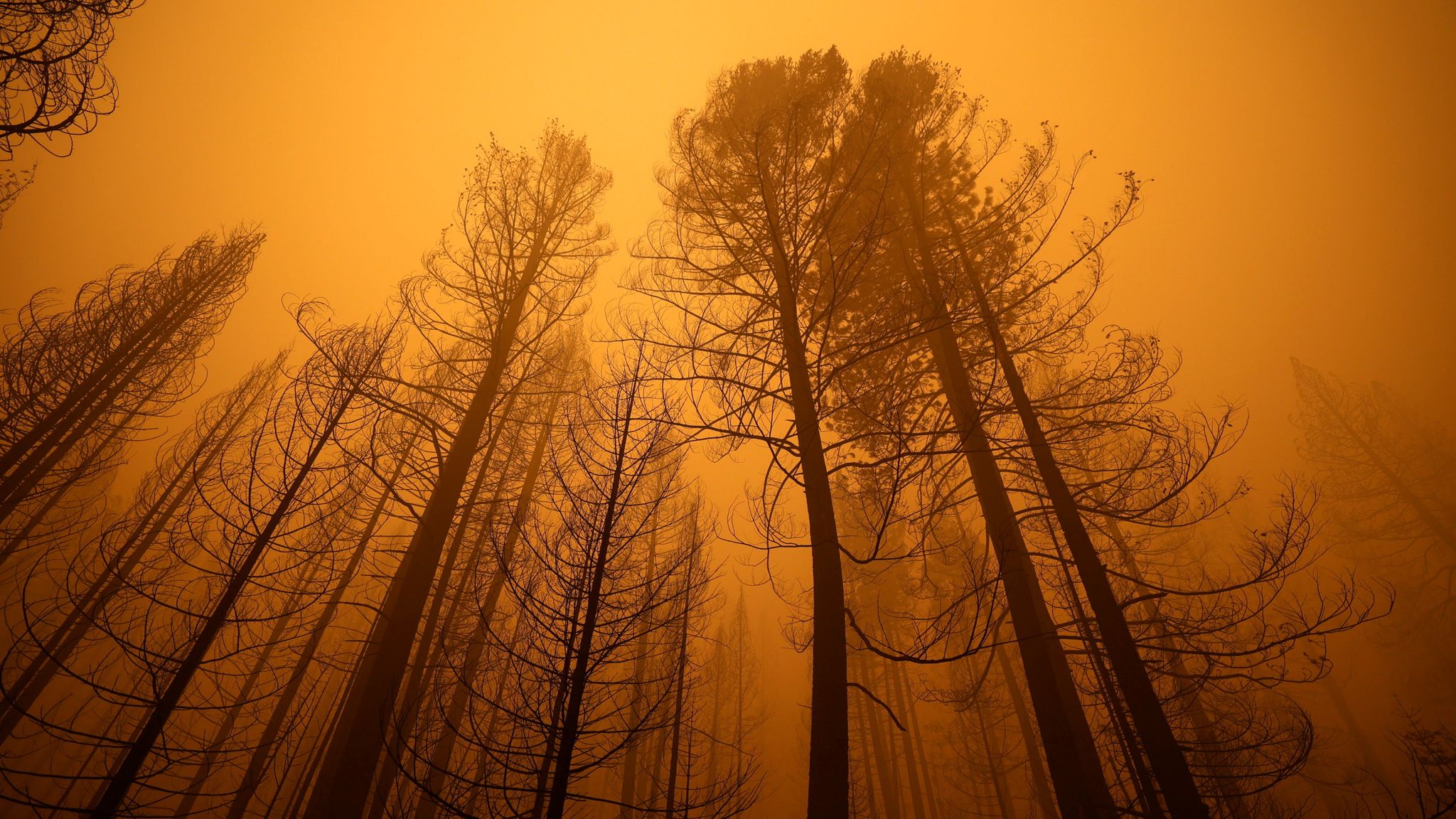 It’s official: 2021 was either the fifth or sixth hottest year on record, depending on who you ask.
It’s official: 2021 was either the fifth or sixth hottest year on record, depending on who you ask.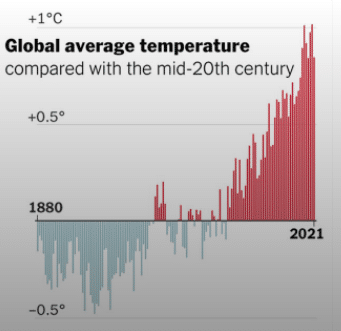 This is part of a broad trend of record-breaking temperatures. The previous seven years have been the seven hottest on record.5 And according to the NOAA, July 2021 was the single hottest month ever recorded.6 NOAA administrator Rick Spinrad characterized this data as a continuation of “the disturbing and disruptive path that climate change has set for the globe.”7
This is part of a broad trend of record-breaking temperatures. The previous seven years have been the seven hottest on record.5 And according to the NOAA, July 2021 was the single hottest month ever recorded.6 NOAA administrator Rick Spinrad characterized this data as a continuation of “the disturbing and disruptive path that climate change has set for the globe.”7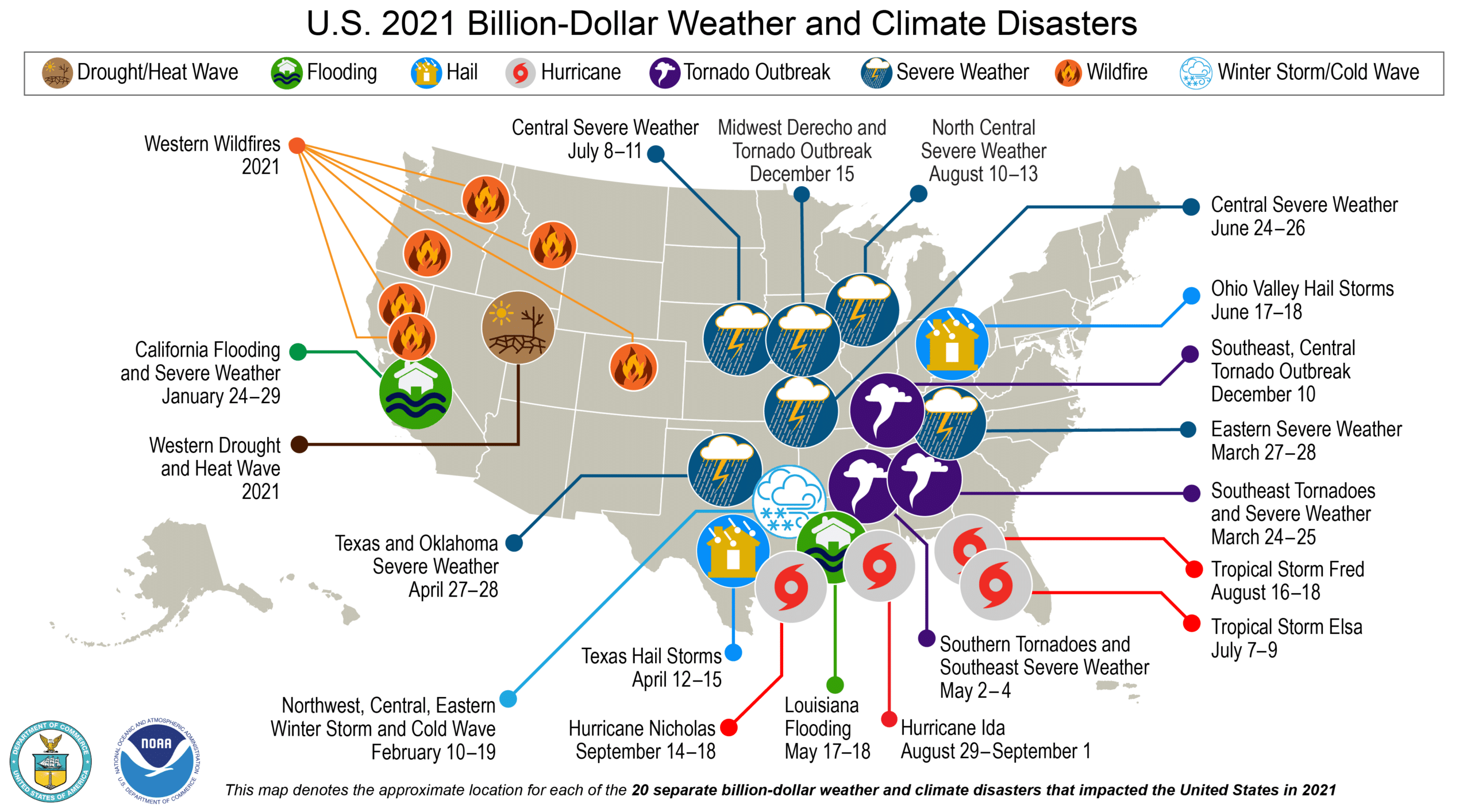
 Across the United States, towns and cities are flooded with “Help Wanted” signs on business doors. The U.S. job market has seen its share of ups and downs over the last two years, but 2021 was a year of record-breaking highs in many categories. The two most important: record-breaking quits and record-breaking new job openings.
Across the United States, towns and cities are flooded with “Help Wanted” signs on business doors. The U.S. job market has seen its share of ups and downs over the last two years, but 2021 was a year of record-breaking highs in many categories. The two most important: record-breaking quits and record-breaking new job openings.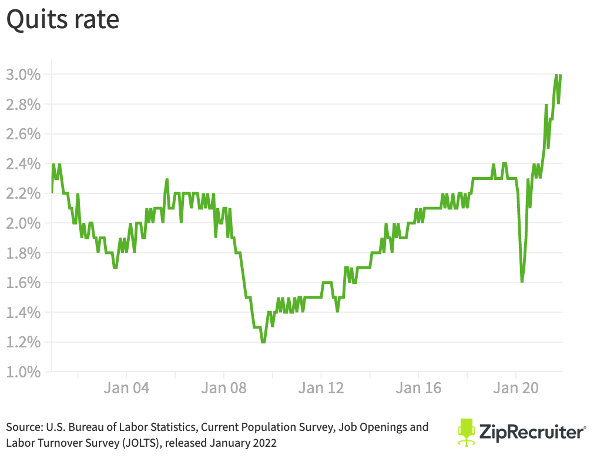
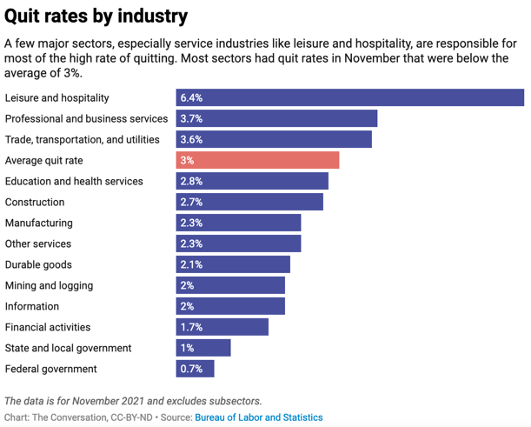
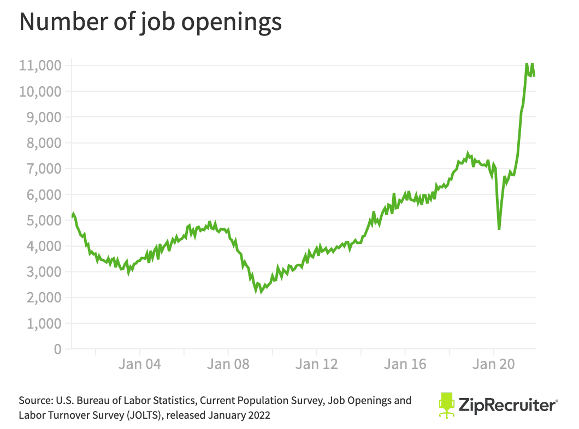
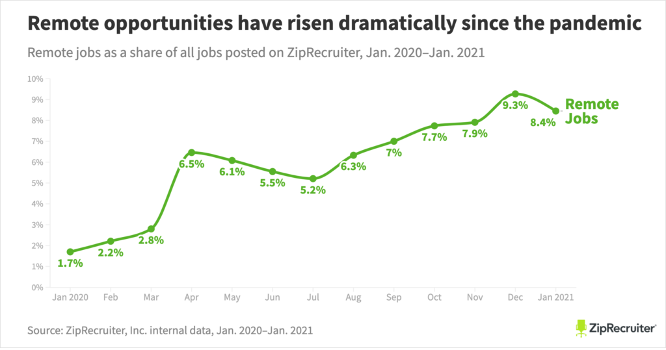
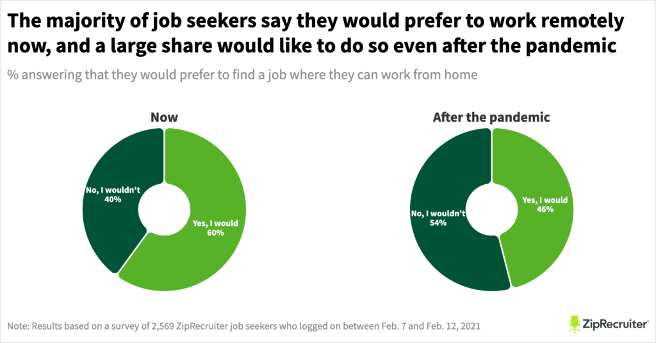
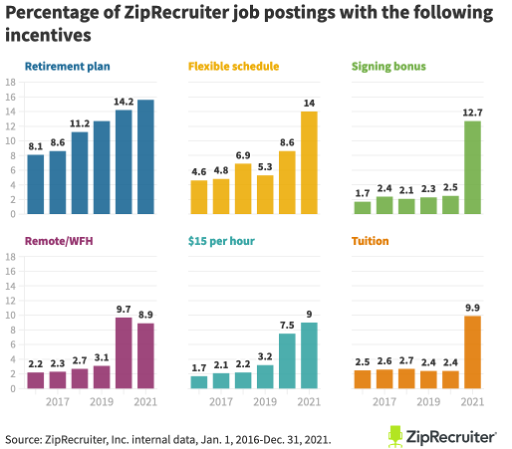
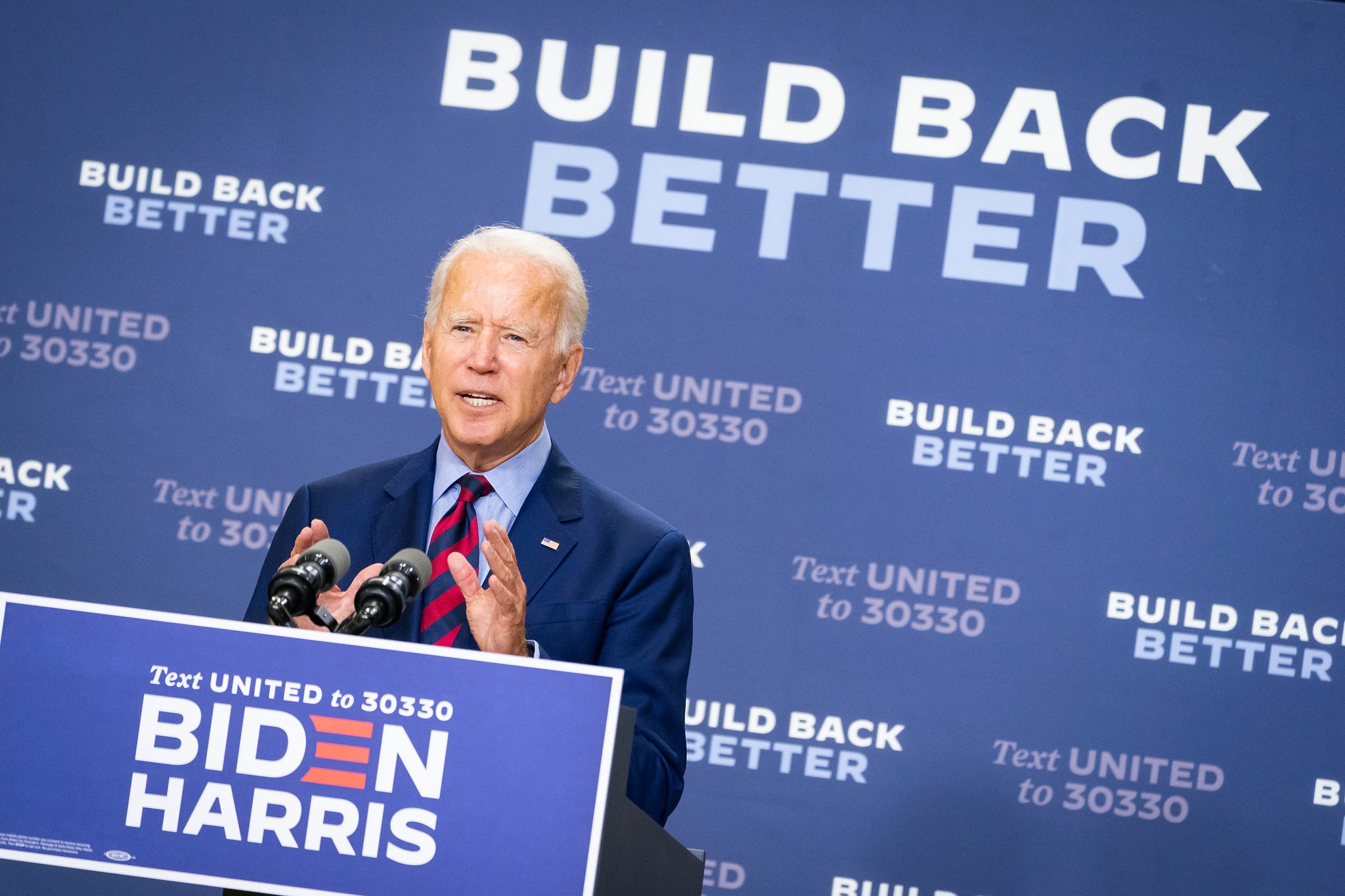 Already facing the enormous challenge of addressing spiking cases of COVID-19 due to the Omicron variant, President Joe Biden’s administration was presented with a new challenge when Senator Joe Manchin, D-W.Va., announced that he would not support the $2 trillion spending plan known as Build Back Better Bill. Citing concerns over the level of spending on social safety net programs and climate policies, Manchin said he could not find a way to support the bill that would be consistent with what he believes his constituents in West Virginia want.1
Already facing the enormous challenge of addressing spiking cases of COVID-19 due to the Omicron variant, President Joe Biden’s administration was presented with a new challenge when Senator Joe Manchin, D-W.Va., announced that he would not support the $2 trillion spending plan known as Build Back Better Bill. Citing concerns over the level of spending on social safety net programs and climate policies, Manchin said he could not find a way to support the bill that would be consistent with what he believes his constituents in West Virginia want.1






